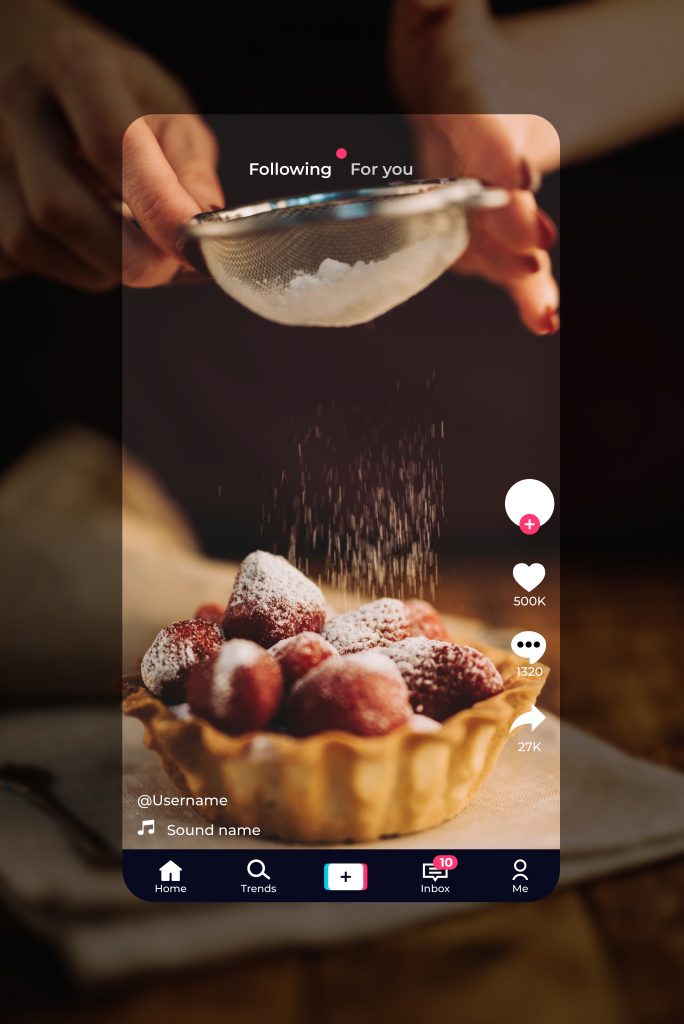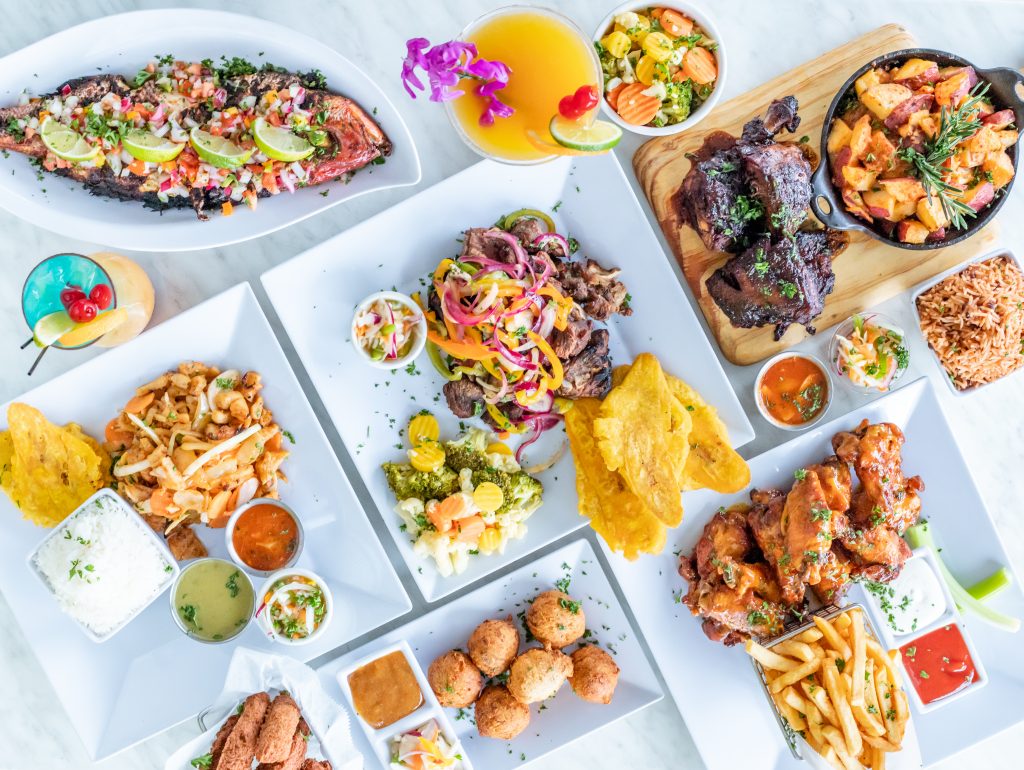How To Build Your Food Business Part 2
If you’ve finished reading the first part of our two-part series on how to build a successful food business and effectively market your food product, you should now know how important it is to incorporate high quality food photography into your packaging designs. But your use of great visuals shouldn’t stop there. Photography is essential for building your brand across all of your product’s touch points, including store posters, print ads, billboard advertisements, your product website and on social media.
In this part of the article you will learn how to build your brand’s online presence, how to interact with your target consumer on social media platforms, how to use marketing tactics effectively and how to make your product stand out in the channel distribution stages.
Web Design for your Food Business
Before launching your product to the public, it is crucial that you build some sort of web presence. One of the best ways to do this is to create an informational product website. A lot of work goes into designing and developing a fully functional website, so whether you are tackling the task yourself or hiring an outside web development agency, here is what you must consider:
Website Visuals
For your food product website you need to make sure that the site is simple, on brand and able tell your story. The website is another great place to show off your brand’s food photography. Include amazing photos, videos of the product, its ingredients, its packaging and its branding. Like we mentioned in part one of this article series, consumers typically trust Canadian sources. Because of this, it’s usually beneficial to have a “Made in Canada” emblem on the product’s packaging. This emblem should also be present on the product website to communicate to site visitors that your product is proudly made in Canada.
Search Engine Optimization
Aside from great visuals and informative emblems, your site needs to be developed effectively. If you are having an experienced web development agency create your website for you, ask them to pull keyword research so they can compose search engine (SEO) friendly content for your site. This will allow people to find your product organically online.
Website Backend
Another important thing to consider when having your website developed is the software being used. Make sure your site is developed with content management system (CMS) software like WordPress so you can easily update the site yourself once it’s launched.
Responsive Website
It is also important to consider how your target consumer is accessing their information today. Chances are people will not always be viewing your website from their laptops and computers. As a result, you need to make sure that your website is designed to be responsive – it needs to be able to make adjustments for mobile devices and tablets. This will make your website easy to navigate from any device, and it will increase consumer satisfaction and ultimately provide a positive brand experience.
E-Commerce Functionality
Lastly, when it comes to web design, it can be very beneficial to set up your site so you can sell your products online. Being able to make sales through your website adds a lot of convenience for both you and your potential customers. Selling online means that you don’t have to depend on distribution channels or the hours of operation of retail stores. If your consumer wants your product, why not make sure they have the ability to purchase it online at any time of the day or night!
Blogging & Videos
Adding a recipe blog and short videos to your site can do just that. The blog should be updated regularly with new recipes that use your product as a key ingredient. The videos can take the form of commercials for your products, or you could even provide a short video interview with the chef. All of these site features will allow your consumers to directly interact with the product, brand and company, and should help contribute to a positive brand experience. Focusing on the areas listed above will provide you with a great looking and functional website, but the large motivation driving consumers to visit your site will be based on the content it provides. It is important to create web content that will allow you to connect with your target audience and grow your food business.
Social Media Tips for your Food Business
Social Pages

If your target consumer is anywhere between the age of 15-30, it is essential to promote your product and brand on social media.
Make sure to create accounts for some of the most popular platforms such as Facebook, TikTok, Instagram and Pinterest and include the links and icons on your website. That way, if a consumer wants to follow your brand or product more closely, they can click on your social media icons from your website and be directed straight to your social media pages to learn more about your food business and the products you offer.
Social media is by far one of the easiest ways for consumers to interact with your brand, so make sure that you are active on the most popular platforms for your industry. Social media users often scroll through newsfeeds looking for content that stands out to them and this is why great food photography is crucial for creating successful pages and accounts for your food business. With thousands of posts filling up user’s newsfeeds day in and day out, your product needs to grab their attention and entice them to click on your page or like your content. Utilize those photos by adding them to fun and relevant posts, or post video recipes on a regular basis so consumers can see how easy it is to make a delicious meal with your product.
If you’re just starting to market your product on social media it can be beneficial to see how your competitors are using their platforms. Go and check out your competitor’s social media pages, observe how regularly they are posting, how they interact with the people who visit their pages and what kind of content they are posting. You can recreate what they are doing and also find better, more innovative ways to do it.
While creating social media accounts are free at the start, it is important to recognize that spending money on social media will expand your brand presence to more people. Don’t be afraid to spend money on Facebook and Instagram ads, or to boost posts – especially recipes and blog posts. If your target audience spends time on social media, investing in social media ads and spending money to boost posts is an easy way to directly reach your ideal demographic.
Other Food Business Tips
Food Bloggers
If you’ve created a website for your food business and are active on a number of different social media platforms, you have a good head start when it comes to marketing your product. But there are still other marketing strategies that can add to your product’s success. One effective strategy is getting a food blogger to do a review of your product. Find a blogger that has a good following on social media and connect with them. But before just calling them up out of the blue, make sure you follow them on their social media pages and take a look at the kind of content they’ve published.
When the time comes to reach out to the blogger of your choice, make sure to be personal and not too formal. Send them an email or reach out to them over Twitter, that way you know you are connecting with them on a form of communication that the blogger checks frequently. If you do get a blogger to cover your product on their blog, make sure you keep in contact with them after they have written about your product. Send them a thank you letter or link to them from your website to help promote their blog. Perhaps even email them to tell them how their blog helped your company increase sales.
If they know that their writing helped your company increase sales, say 30%, this can help them sell ad space, gain new clients for their business and benefit them in other ways. Connecting with bloggers can often be a mutually beneficial exchange for all of the parties involved, so make sure you are keeping a positive relationship with the bloggers who have helped promote your food business.
Food Sampling Programs

While product websites and social media pages are great ways to market your product, there are still very effective face-to-face marketing strategies that can help make your food business a success. One of these strategies is launching a food-sampling program. Let’s be honest, who doesn’t love free food? You’re probably thinking about a moment right now where you stopped by one of those sampling booths at Costco just to try what they were giving away. Well these sampling programs are wildly popular and they can help get your product noticed, especially if it’s new. Having potential customers actually taste your product is the best way to gain followers.
Take a look at what a company called Inglorious Fruits and Veggies did in France. First, the company picked up on a growing trend among consumers in the food industry. People today are concerned with the state of the world’s environment, and are now conscious of their ecological impact. Inglorious Fruits and Veggies took this environmental concern and turned it into a business model.
They bought the defect fruits and veggies from farmers, items that otherwise would have been thrown away, and sold them to consumers for 30% less. But because consumers often favour a perfect-looking product over a grotesque-looking one, the company had to find a way to show consumers that their fruits and veggies taste just as good as the other more visually appealing products available. This is where their food sampling program came into play. The company gave away free fruit juices and soups to let consumers taste it for themselves.
Not only did the juices and veggies taste great, but the ingredients were bought at a fraction of the price and they helped keep a huge heap of waste out of the landfills. Their innovative business model and their food sampling program led Inglorious Fruits and Veggies to great success as consumer’s began purchasing these products faster than the company could supply them. Wouldn’t every food business like to have this same problem?
Channel Distribution
When trying to get your product picked up by retailers, it is important to know the role in which brokers, wholesalers and retailers play. A broker’s role is to represent the food product to retailers. They work in between both to help the relationship and manage expectations. Some brokers specialize in fresh foods or dry goods and may also represent a product that is similar to yours, which could lead to a conflict of interest. It is important to know what area your broker specializes in and what products they already represent. When a broker represents a product, they will then try to have that product picked up by wholesalers.
Wholesalers will purchase the product in bulk directly form the broker and then sell it to retailers (such as grocery store chains). In order for brokers and wholesalers to take on your product they need to believe that there is an opportunity to sell it. They will do their research; they’ll go through grocery store isles to see if there are similar products already available on the market. They will try to quantify your product to see how much money they can generate. Brokers and wholesalers are looking for innovative products that will sell easily, and you need to make sure your product is one of them.
Knowing the intricacies of the channel distribution process will help you create a successful food business. You need to make sure that your product is something that consumers will want to buy, and you need to make sure you market it to the best of your ability, create the best brand experience and create an irresistible package design. All of these elements working together will help get your product picked up by brokers, wholesalers and retailers, which will position your food business for long-term success.
There you have it! The main areas to focus on to successfully market your food business. We’ve discussed the importance of building your product’s brand, what to consider when developing labeling and packaging designs, how to create an online presence through a product website and social media platforms, how to use marketing strategies such as bloggers and sampling programs and the motivations driving brokers, wholesalers and retailers. You should now be equipped with the information you need to start successfully marketing your food business and well on your way to turning that go-to dinner party dish into a national, and even international fan-favourite.
About ZOO Media Group
ZOO Media Group is a London, Ontario based branding, marketing, design and web development agency with experience working with with food manufacturers and agriculture throughout Canada on projects ranging from branding, food packaging design, translation, video production, brochure and presentation design and intranet APP and web development. Contact us today to learn more on how we can help you build a strong brand for your products.




